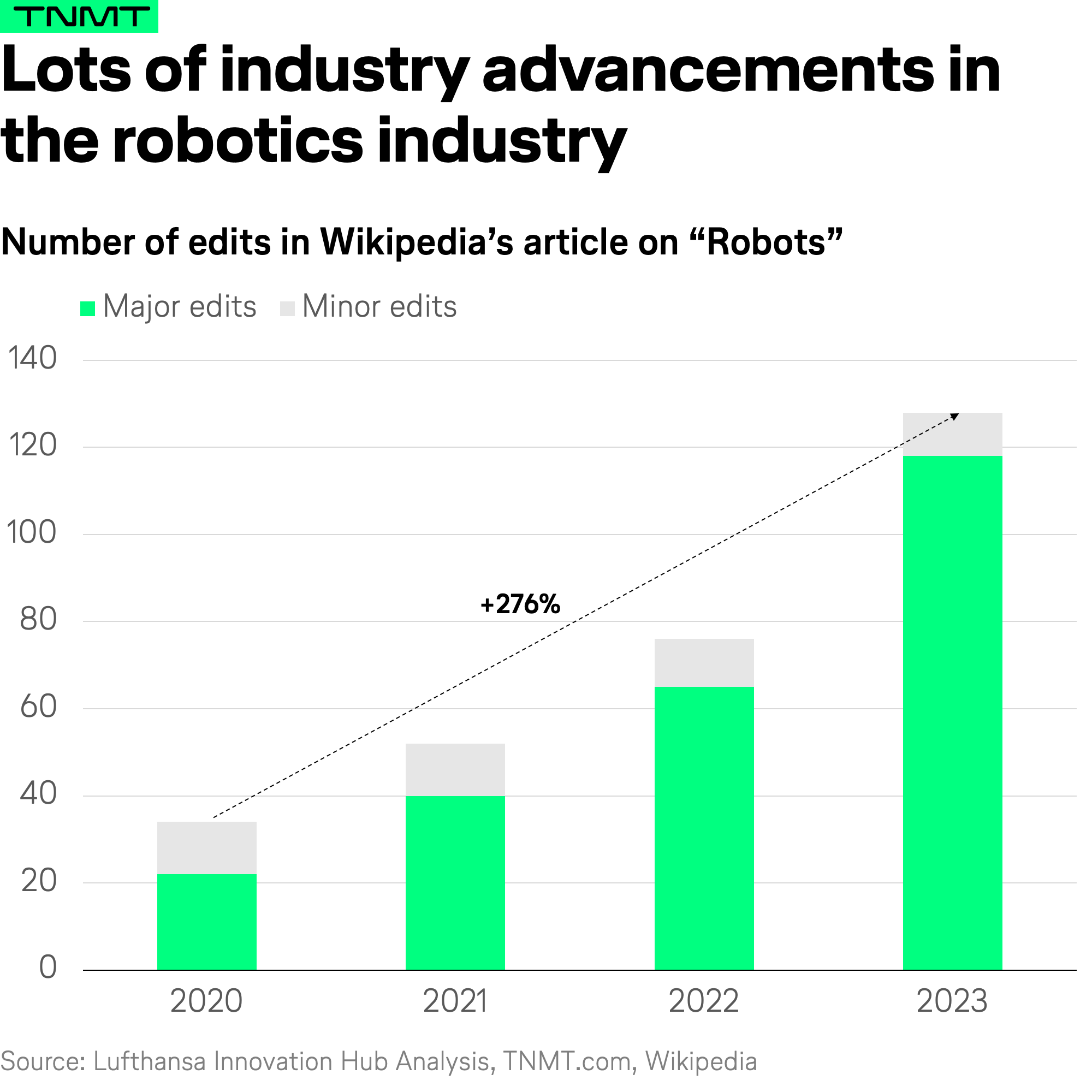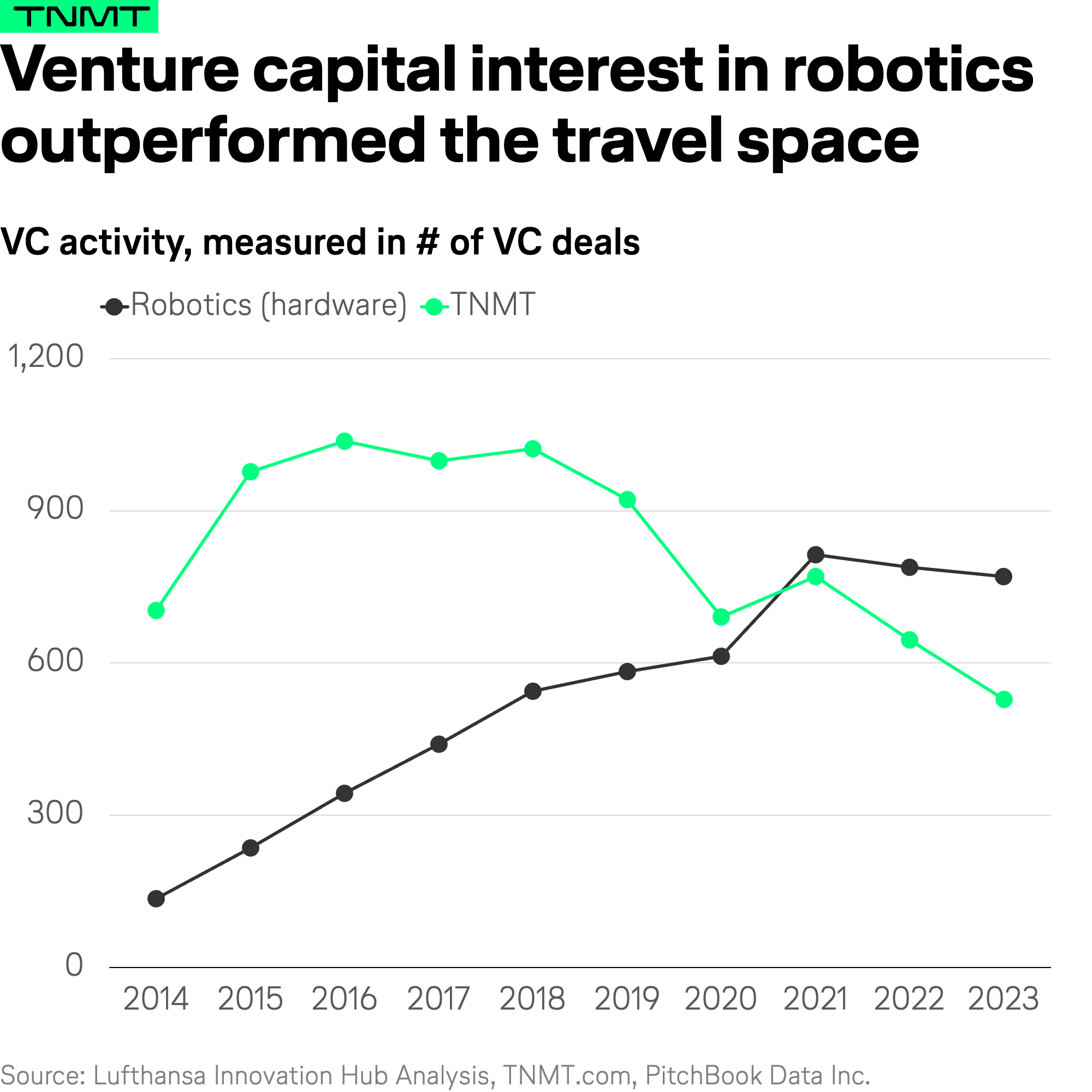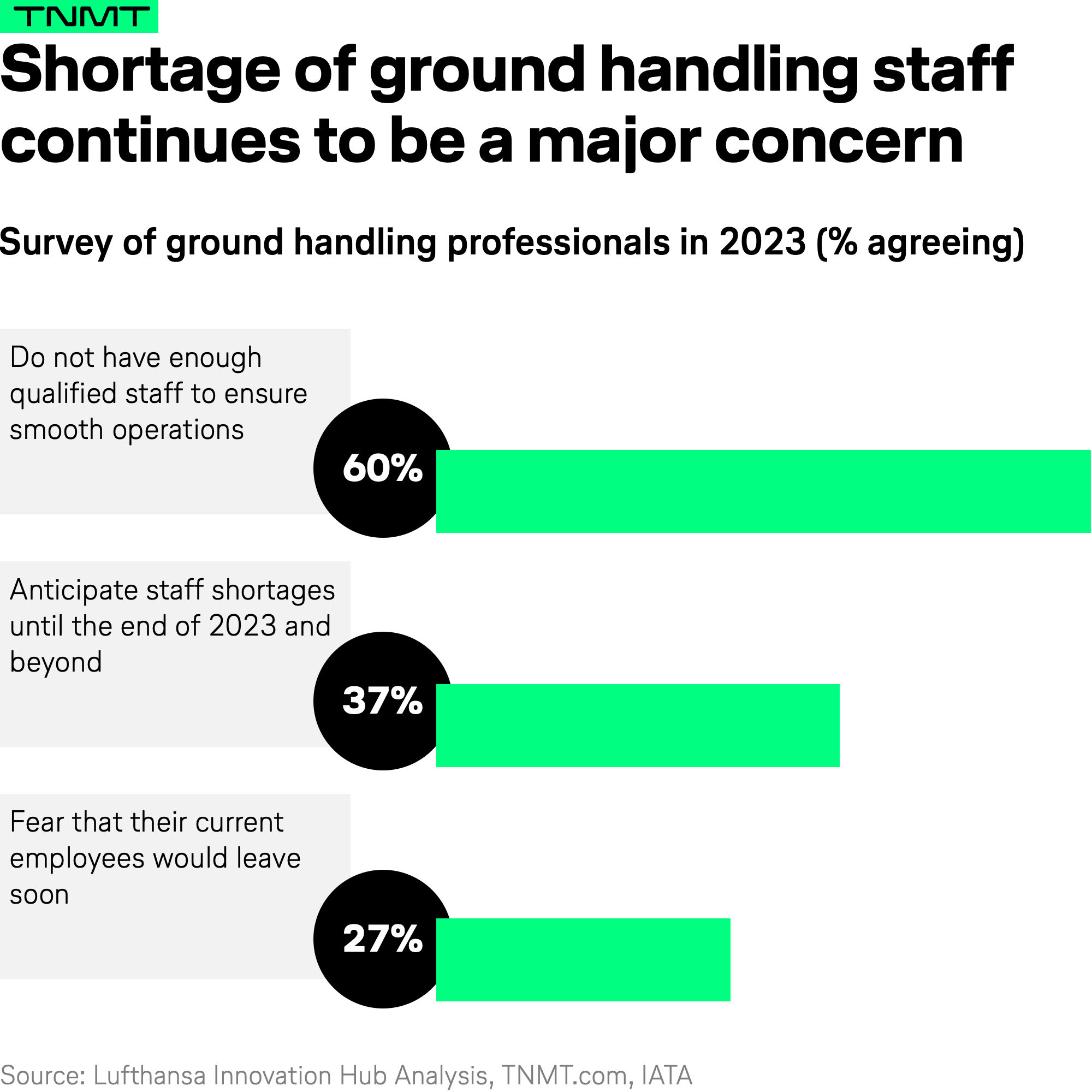AeroTime is pleased to partner with Lufthansa Innovation Hub’s TNMT newsletter to feature guest content on our website. This collaboration aims to regularly deliver insightful articles and analyses, focusing on the latest advancements and trends in the aviation industry. Article written by Siddhant Mehra.
If 2022 was the year of the metaverse and 2023 the era of Generative AI and ChatGPT, then 2024 is undeniably the year of robotics.
This shift signifies a broader trend in the tech industry, moving from a software-centric focus to a renewed interest in hardware.
To quantify the growing excitement around robotics, we analyzed Wikipedia editing activity on the “Robot” page. Similar to our previous analysis on predicting hype cycles through Wikipedia edits, this approach reveals how industry developments spark updates and additions to relevant articles.

As illustrated above, the Wikipedia page on robots has seen a steady increase in major edits over the years, culminating in over 120 edits in 2023. While it’s too early to report 2024 figures, it’s expected that this trend will continue to climb.
Clearly, robots are capturing the public’s attention and becoming a significant focus in mainstream techland.
This rise in tech attention for robotics is not just reflected on Wikipedia.
It is also evident in hard investment dollars.
- According to our analysis of Pitchbook data, there has been a notable increase in VC deals for robotics startups over the last decade.
- In 2023, despite a general slowdown in overall VC investment activity (including investments in the Travel and Mobility Tech sector, see the green line below), VC interest in robotics remained robust.

Why Aviation Should Leverage Robotics
Given the current robotics movement, we wanted to understand how aviation is leveraging this technology (if at all).
Is aviation participating in robotics innovation, or is our industry merely observing advancements from the sidelines?
This is a critical question, particularly because the aviation sector, especially ground operations within airports, urgently needs to accelerate automation and improve efficiency in response to the ongoing severe labor shortage.
Staff shortages are arguably one of the key concerns, if not the top one, that the industry must address. These shortages have been a primary factor in the operational bottlenecks faced by the airline sector over the last few years.
- According to IATA, more than half of ground handling professionals at airports do not believe they have the staff available to ensure smooth airline operations.
- At major travel hubs like Schiphol Airport, up to 90% of employees are concerned about handling summer crowds due to severe staff shortages.

What makes the staff shortage in the airline and airport context so severe, and arguably even tougher than in other industries, is the lengthy process to hire employees. This is due to the need for stringent background checks and security clearances.
Adding the time required to interview and onboard new workers, the entire hiring process can easily take several months—far too long to quickly react to current operational bottlenecks.
For example, hiring aviation staff in Berlin-Brandenburg typically takes at least one month just to obtain security clearance from the Aviation Authority for a new worker.
To read the full report, follow the link
Subscribe to the tnmt newsletter from Lufthansa Innovation Hub here.

